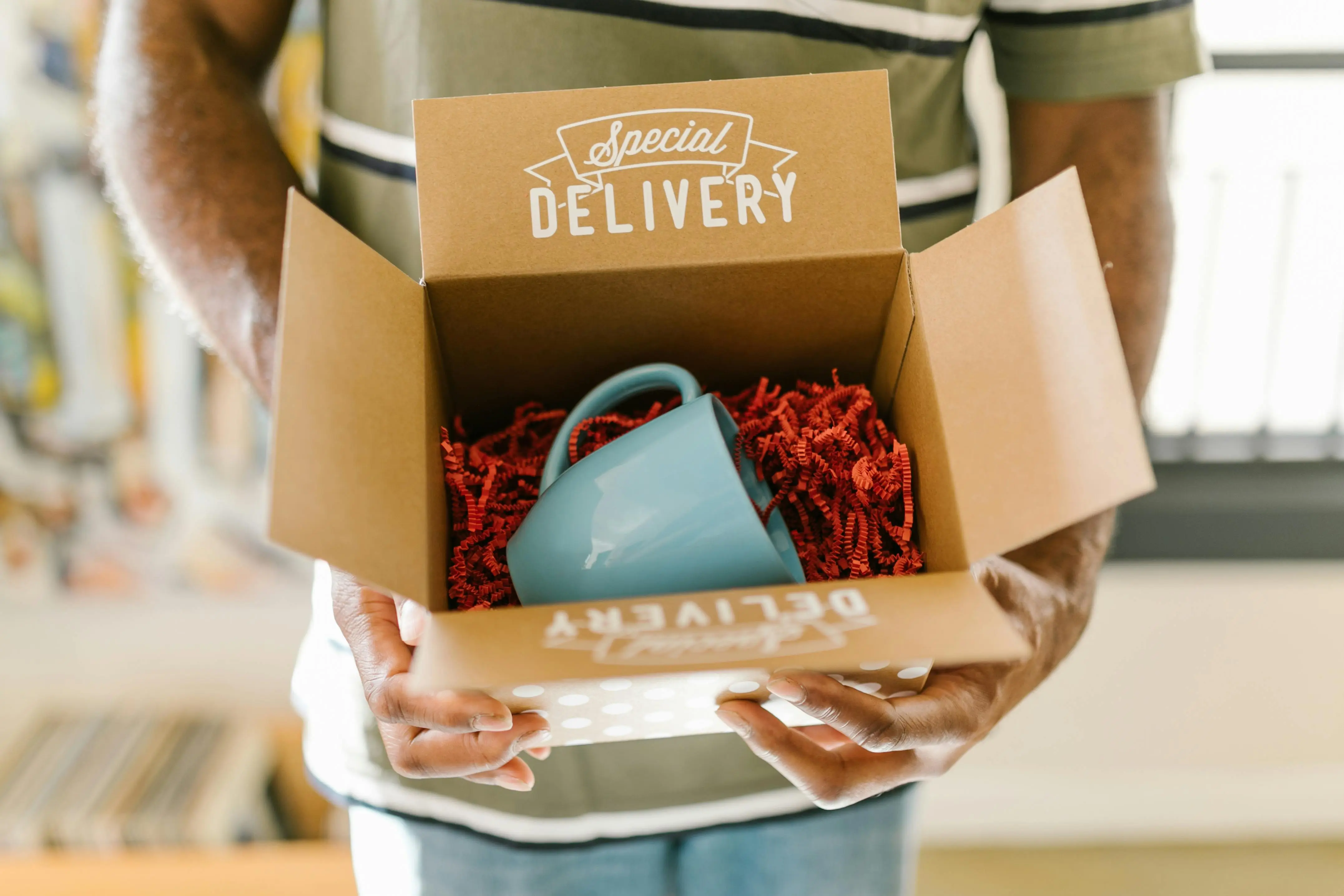Launching a subscription box? This guide walks DTC founders and ops leads through subscriber demand validation, pricing strategies, ecommerce setup, and essential subscription box fulfillment workflows, so you can scale efficiently and ship on time with expert 3PL support.
.webp)
What is Subscription Box Fulfillment and When to Use It?
Subscription box fulfillment is the recurring process of receiving inventory, assembling curated kits (kitting), inserting branded materials, packing to specification, and shipping boxes to subscribers on a defined schedule—monthly, quarterly, or customized. Within the 3PL context, it involves integrating billing, inventory management, and shipping workflows alongside standard ecommerce pick and pack operations.
Subscription box fulfillment differs from typical ecommerce fulfillment chiefly by its focus on recurring orders, the complexity of kit assembly, frequent use of custom inserts or printed collateral, and the critical need for billing and shipping synchronization. These additional layers require sophisticated workflows and specialized partner capabilities.
When to Use a 3PL Partner Specializing in Subscription Boxes:
If your DTC brand is launching or growing a subscription program with recurring kitting, branded inserts, seasonal variations, or strict ship windows, partnering with a 3PL that specializes in subscription boxes is essential. They reduce errors, compress cycle times, handle inventory complexities, and allow your internal team to focus on product development, marketing, and growth.
Outsourcing your subscription box fulfillment becomes especially valuable when volume scales beyond your internal capacity or when you need robust ecommerce integrations that manage recurring billing and shipping.

Subscription Box Fulfillment Workflow: Step-by-Step SOP
Launching and scaling monthly or quarterly subscription boxes requires a methodical approach. Below is a comprehensive fulfillment Standard Operating Procedure (SOP) designed to ensure accuracy, maintain margins, and uphold customer satisfaction.
1. Validate Your Niche and Subscriber Demand Before Launch
Before committing capital and resources, validate your subscription box niche and demand through targeted research and market testing. This includes:
- Analyzing competitors, their price points, product mixes, and customer feedback.
- Running a pilot program with 50 to 200 boxes, focusing on the value proposition, unboxing experience, and frequency preferences.
- Confirming subscriber willingness to pay and expected cadence (monthly, quarterly, or specialty). Extensive research guides product assortment and packaging decisions to tailor your offering successfully.
2. Price Your Box for Cost and Margin Coverage
Pricing subscription boxes accurately is crucial to profitability and sustainability. Key considerations include:
- Product costs: wholesale pricing for all SKUs included in the box.
- Packaging and inserts: boxes, void fill, printed collateral such as welcome cards or promotional flyers.
- Fulfillment and labor: kitting, inspection, packing, and shipping fees charged by your 3PL.
- Shipping: dimensional weight pricing, zones, and carrier surcharges.
- Payment processing and customer service: fees associated with recurring payments and support.
- Returns and refunds management: potential costs for handling customer returns.
Factor in promotional discounts and seasonal volume spikes in your pricing model and account for margin targets. Adjust box size and weight to optimize shipping breaks. Tools that model shipping costs by zone and dimensional weight improve accuracy.
Stripe’s subscription box business model guide offers additional pricing insights for different subscription strategies.
3. Set Up Your Ecommerce Platform, Billing & Shipping Workflows
Configure your ecommerce and billing systems to ensure smooth recurring order generation and fulfillment:
- Select a subscription platform capable of integrating with your ecommerce ecosystem (Shopify with subscription apps, Cratejoy, Subbly, etc.).
- Set cut-off dates, renewal cycles, and billing schedules.
- Map shipping options regionally, allowing for add-ons or multi-item rules.
- Integrate your 3PL’s Warehouse Management System (WMS) and carrier accounts to automate order flow and track shipments in real time.
This integration ensures billing and shipping remain perfectly synchronized, reducing subscriber churn caused by missed renewals or incorrect shipments.
4. Configure Recurring Order Generation, Pick & Pack, and Custom Kitting Workflows
Subscription fulfillment workflows require precision in assembling varied and frequently changing kits:
- Develop a bill of materials (BOM) for each box version and month; identify product alternates to avoid stockouts.
- Standardize detailed SOPs for kitting stations, including barcode scanning of each item, quality checks, and exception handling.
- Design branded inserts (welcome cards, instructions, promotions, QR codes linked to portals) carefully testing paper quality and sizing for optimal packing efficiency.
- Pilot packout processes on a small scale to validate cycle times, label placements, and sealing methods.
Custom kitting often involves multiple SKUs and variable inserts, which demand operator training and quality control. Check out All Points’ custom kitting and product assembly services for expert execution examples.
5. Run Ongoing Quality Assurance: Inventory Accuracy, Order Cycle Time, and Customer SLA Monitoring
Monitor performance rigorously:
- Track pick/pack accuracy with a target of ≥99.5% to avoid incorrect box contents.
- Measure order cycle time from order receipt to shipment; typically under 24 hours to meet ship windows reliably.
- Maintain dock-to-stock times under 4 hours to guarantee updated inventory visibility before kitting.
- Conduct pre-shipment audits—including weigh checks, insert verification, and packing inspections—to catch last-minute errors.
- Use reporting dashboards to monitor SLA adherence and immediately address exceptions like mispicks or label inaccuracies.
6. Coordinate Marketing Launch and Align With Your 3PL for Scale Readiness
Coordinate the subscription box launch with your marketing calendar to optimize impact and operational readiness:
- Align cut-off dates and renewal windows with promotions, influencer campaigns, and launch events to manage order volume spikes smoothly.
- Prepare support content such as unboxing videos, FAQs, and scripts for common customer inquiries such as shipment status or address changes.
- Scale labor flexibly with your 3PL during peak weeks or new product rollouts to avoid bottlenecks or shipping delays.

Subscription Box Fulfillment KPIs and SLAs
Below is a table of common KPIs (Key Performance Indicators) and SLA (Service Level Agreement) targets critical to subscription box fulfillment operations:
.webp)
Meeting these KPIs builds trust and loyalty with subscribers, reducing churn and supporting sustainable growth.
Pricing Drivers for Subscription Box Fulfillment
Several factors directly influence the per-unit and overall costs of subscription box fulfillment:
- Complexity of Kit Assembly: The number of SKUs per box, segmentation by subscriber tier, additional quality control, and variable inserts add labor and handling time.
- Custom Printing and Inserts: Variable data printing, specialty finishes like embossing or foil stamping, and on-demand printing increase costs.
- Packaging: Box size, weight, and use of void-fill material impact dimensional weight shipping charges and materials expense.
- Volume and Cadence: Larger monthly volumes often negotiate lower labor rates, but peak weeks require additional staffing and possibly overtime.
- Systems Integration: Setup and maintenance costs for ecommerce billing and WMS integrations; complex data mapping and testing cycles.
- Handling Requirements: Tracking lot/batch numbers, managing temperature controls or hazardous materials (lithium batteries), and age verification add compliance overhead.
- Returns and RMAs: Reverse logistics, inspection, refurbishing, or disposing of returned goods impact operational expenses.
- Seasonal Demand Spikes and Promotions: Flexible labor and expedited shipping contingencies can increase costs during holidays or special campaigns.
Understanding these drivers enables you to create accurate budgets and pricing models and collaborate better with fulfillment partners.
Risks & Mitigations in Subscription Box Fulfillment
Subscription box fulfillment carries several operational risks but with proactive mitigation, brands can maintain strong service levels.
Risk Mitigation Inaccurate Kit Assembly Use detailed SOPs with barcode scanning, double checks, and operator training. Sample audits help spot errors early. Billing/Shipping Misalignment Integrate software platforms fully; automate and audit renewals and shipment calendars to prevent missed or duplicated shipments. Inventory Stockouts Maintain safety stock buffers, use rolling forecasts, enforce dock-to-stock SLAs, and identify alternate SKUs. Late Shipments Causing Churn Rigorously track on-time shipment SLAs; develop carrier contingency plans and scale labor escalation during peak periods. Packaging Damage in Transit Conduct drop tests, select right-sized packaging, and optimize void-fill materials to protect contents. Compliance Issues (cosmetics, food, batteries) Verify regulatory requirements; train staff rigorously and document SOPs for restricted products.
Actively managing these helps preserve brand reputation, subscriber loyalty, and operational efficiency.
The Atlanta Advantage for Subscription Box Fulfillment
Choosing the right fulfillment partner location impacts service quality, cost, and speed. Atlanta offers distinct advantages for subscription box fulfillment:
- 2-Day Reach to ~80% of the U.S. Population: Atlanta’s logistics network gives you ground delivery access to nearly 80% of US subscribers in 2 days or less, reducing reliance on costly air freight while speeding delivery and improving customer satisfaction.
- Cost Efficiencies from Centralized Southeastern Location: Zoned shipping costs are lower because Atlanta sits near the USPS distribution center and major regional carriers. This centralized hub streamlines parcel routing to both coasts and reduces variable freight expenses.
- Family-Owned, Operator-Grade Execution: The All Points Atlanta facility offers an operator mindset with experienced teams managing custom kitting, quality control, in-house printing of inserts, and ecommerce fulfillment—all under one roof—to ensure brand consistency and high accuracy at scale.
This combination of geographic and service advantages optimizes your subscription box’s cost and customer experience.
What You Get With All Points
Partnering with All Points brings specialized capabilities tailored for subscription box fulfillment:
- End-to-End Fulfillment: From order receipt and dock-to-stock receiving through accurate kitting, branded inserts, packout, and shipment confirmation—your entire subscription box fulfillment workflow is managed smoothly with targeted SLAs and KPI tracking.
- Custom Kitting and Printing: Our teams design workflows that marry brand experience with packout accuracy. On-time, photo-verified packouts with polished inserts and sleeves are standard. Explore our custom kitting and product assembly services.
- Ecommerce Integration and Recurring Order Handling: We sync your store and subscription billing platform with our WMS for real-time order flow, address validation, and shipment tracking. Details at our ecommerce order fulfillment solutions.
- On-Demand Printing and Inserts: Welcome cards, promo offers, QR codes, coupons, and marketing collateral tailored exactly to your specifications. Learn more about our custom printing and marketing materials.
- Proven Onboarding Process: Our clear timelines, data mapping, test cycles, and go-live plans ensure a smooth transition with rapid time to market. We establish SLA targets upfront and review progress to keep fulfillment metrics on track.
- A Partner Since 1995: Family-owned and Atlanta-based, All Points brings a “whatever it takes” mindset, scaling alongside your brand reliably from launch to maturity.

Call to Action
Ready to launch or scale your subscription box with confidence?
- Get a kitting quote for your next subscription cycle.
- Talk to an Atlanta 3PL expert about subscription box fulfillment today.
Based in Atlanta since 1995 — Call us at 1-800-555-0123 | Email contact@allpointsatl.com
FAQ
What are typical SLAs for subscription box fulfillment?
Most brands target ≥99.5% pick accuracy, order cycle time under 24 hours (or aligned with ship windows), dock-to-stock within 4 hours, and ≥98% on-time shipment. These SLAs are agreed upon during onboarding and monitored monthly.
How does All Points handle recurring order billing and shipping alignment?
We integrate your subscription and ecommerce platforms to automate renewals and order generation. Cut-off dates, shipping schedules, and address updates are synchronized, with pre-release audits each cycle for data integrity.
What pricing factors influence subscription box fulfillment costs?
Major drivers include kit complexity, packaging size and weight, print and insert requirements, volume fluctuations, ecommerce and WMS integration complexity, and compliance handling.
How long does onboarding and implementation take?
Typically 3–6 weeks, including discovery, data and system integration mapping, SOP setup, sample kitting, test orders, and a pilot before full launch.
Can All Points customize kits and printed inserts for subscription boxes?
Absolutely. We assemble multi-SKU kits, segment subscriber tiers, and include variable printed inserts such as welcome cards and promos—all in-house for accuracy and brand consistency.

Conclusion
Learn how to validate demand, price smartly, and optimize workflows for your subscription box business. This guide covers recurring kitting, ecommerce integration, key KPIs, and the benefits of expert 3PL support—helping you scale efficiently, meet ship windows, and delight subscribers with every box.




.webp)
.webp)
.webp)
.webp)
.webp)
.webp)

